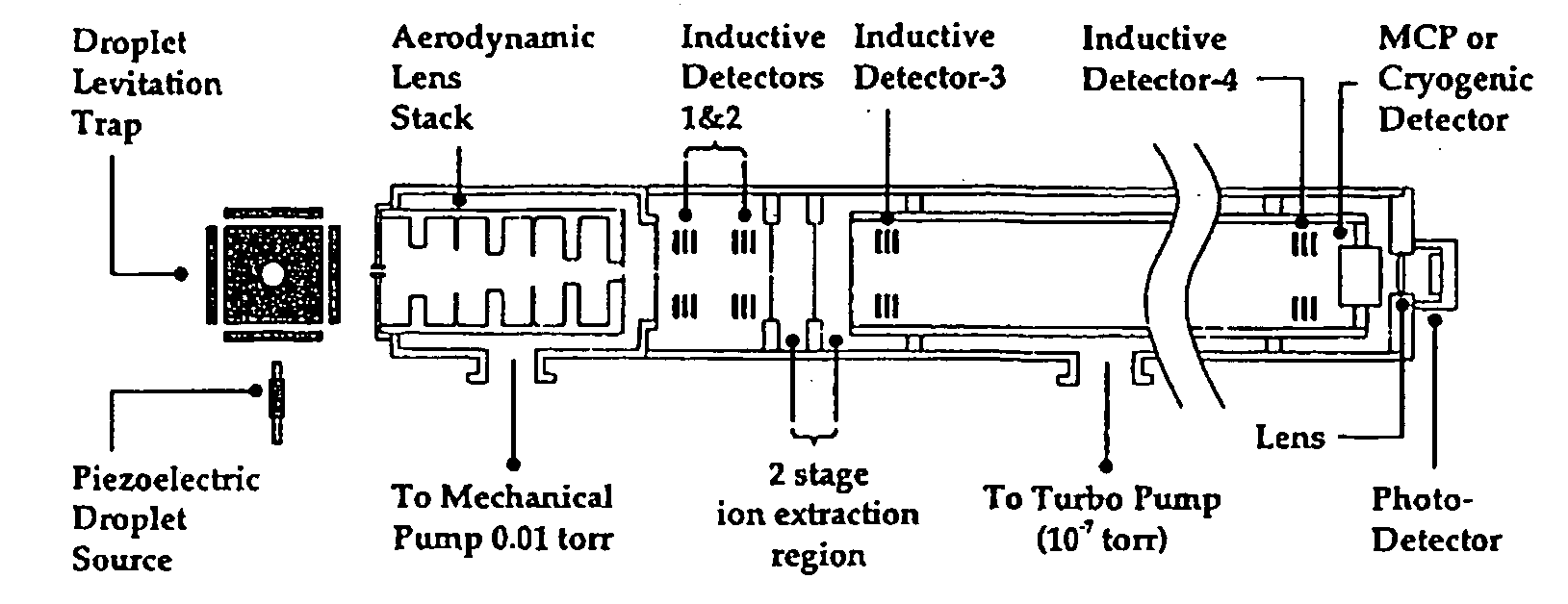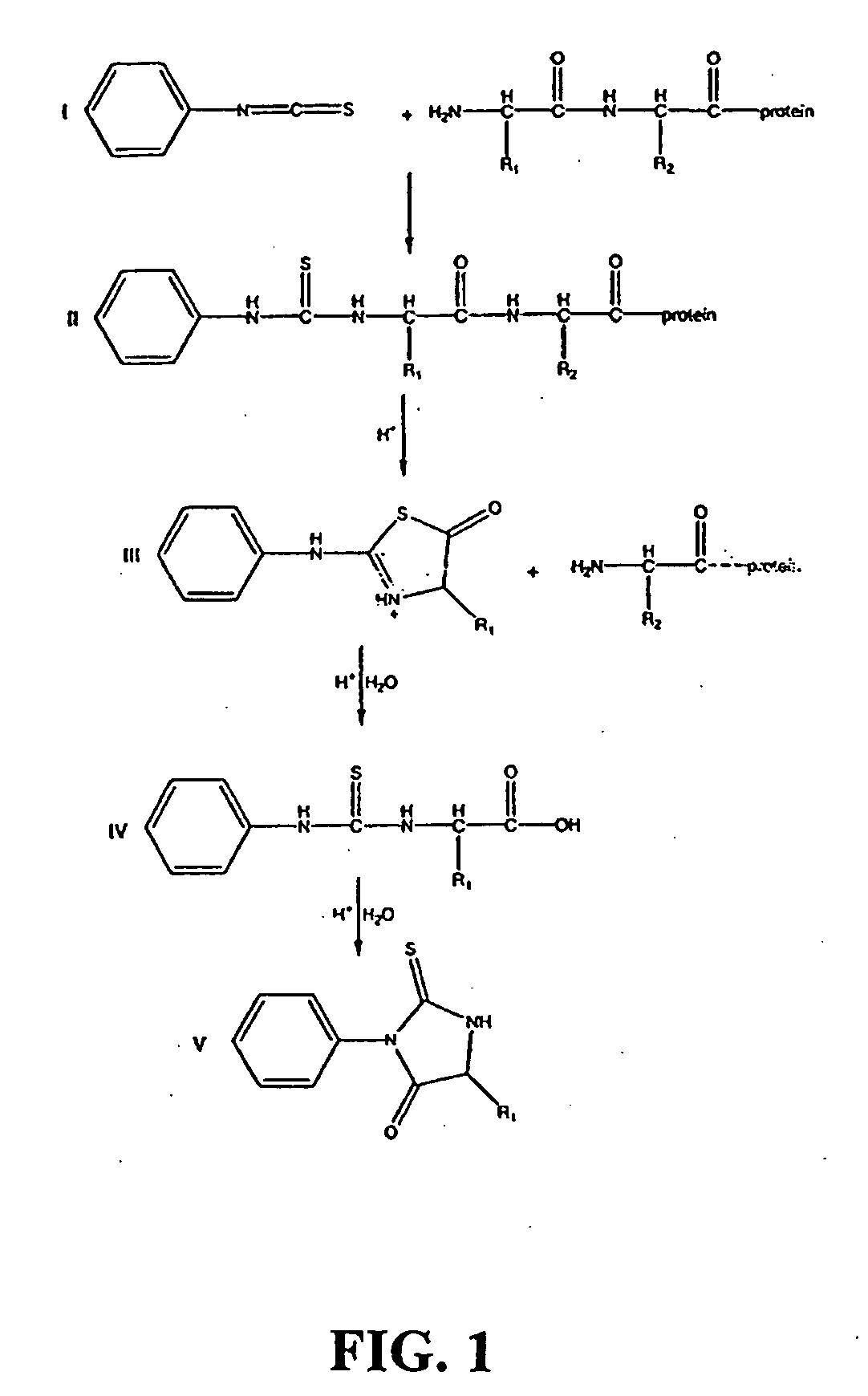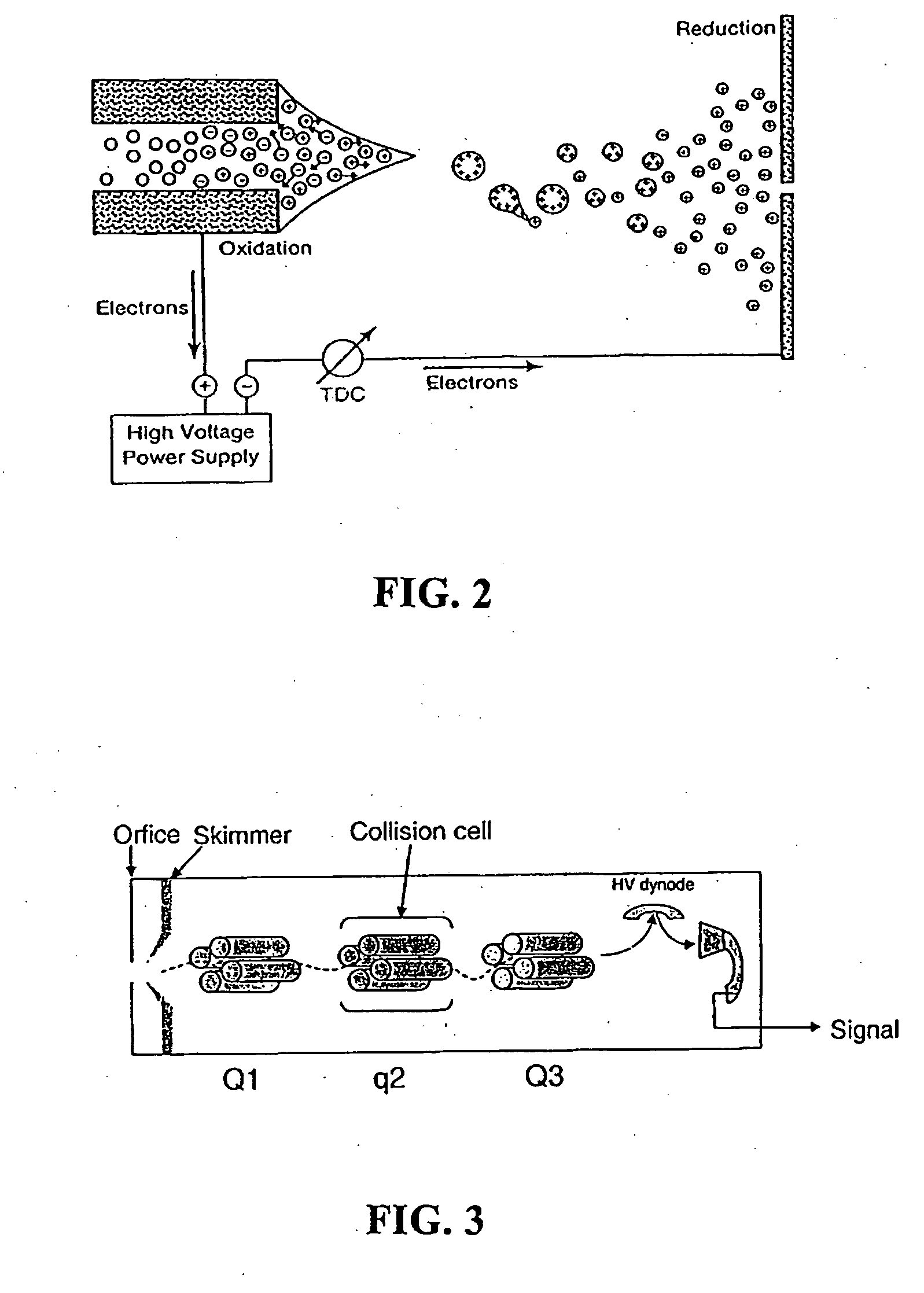[0023]Despite the success of
protein sequencing methods based on electrophoretic technologies, there remains the potential for even greater improvement through
mass spectrometric (MS) analysis methods, as disclosed and claimed herein. In contrast to electrophoretic mobility, which is an extrinsic and highly condition-dependent property of molecules, mass-to-charge ratio (m / z) is an intrinsic and condition-independent property of ions. Therefore, an m / z ratio determined on a mass
spectrometer is an intrinsically more accurate and dependable parameter for the analysis of a molecule than is electrophoretic mobility. Moreover, the speed of MS analyses is truly phenomenal, with the potential for analyses to be completed on a
millisecond scale. Thus, by developing MS methods for
amino acid sequencing that are suitably robust and high-performance,
mass spectrometric-based methods have the potential to transform quite radically the nature of large-scale polypeptide and
protein sequencing efforts. Finally, whereas
electrophoresis-based methods are fairly mature at the present time, with only the potential for a variety of incremental improvements within the existing paradigm, MS-based methods present a wholly new approach to protein and polypeptide sequencing.
[0025]Due to the MALDI and ESI
ionization techniques, the analysis of proteins by
mass spectrometry has emerged as the technique of choice for obtaining high
performance results from small amounts of
analyte. There are several basic approaches to de novo
protein sequencing where
mass spectrometric techniques are involved.25 In one approach,
mass spectrometry is simply introduced as a detection
system. HPLC fractions of Edman degradation products are analyzed by a mass
spectrometer in place of the conventional
UV detector. Although the sensitivity has been pushed down to the high attomole level by using this method, the sequencing speed is not increased at all. In another approach, a concentrated set of
peptide fragments (a sequencing ladder) is generated, either chemically or enzymatically, in a controlled fashion. The sequencing ladder is subsequently separated and detected by a mass
spectrometer. This protein ladder sequencing technique lends itself to very high sample
throughput at very low per-cycle cost. Disadvantages of this technique include the lengthy
sample preparation and the large amount of pure peptide required.
[0028]The field of mass spectrometry has developed significant bioanalytical capacity with the recent development of the twin
ionization techniques: MALDI and ESI. The promise for rapid and accurate
sequence analysis of proteins by mass spectrometry, however, is limited by the
decreased sensitivity with increasing lengths of the
polypeptide chain. The mass spectrometric approaches based on
database searching have become the method of choice in high-
throughput identification of known proteins. These methods, however, will not work if the protein in question is not in a
protein database. In short, if the
mass spectrum of the protein
analyte does not yield a match within the
database, the protein cannot be sequenced by conventional mass spectrometric means. Therefore, the present invention is directed to a
novel protein / polypeptide sequencing technique based on gas-phase Edman degradation. This technique disclosed herein provides matchless speed and sensitivity for de novo
sequence analysis of intact proteins and peptides.
[0030]
Mass spectrometry can be coupled to Edman degradation in several different ways. One approach is to use MS to replace the conventional
UV detection at the end of each Edman degradation cycle.29 As noted above, while this approach provides sensitivity at high attomolar level, there is no
gain in sequencing speed. Another approach is to generate sequencing ladders consisting of degradation fragments of different lengths. These ladders, which are subsequently separated in size and detected in the mass spectrometer,30 provide higher sample
throughput but the approach still requires a fair amount of up-
stream wet chemistry. The need for this additional
processing limits further improvement in the sensitivity and speed of
sequence analysis.
[0031]In contrast to these two approaches, in the present invention an
intact protein or polypeptide molecule is introduced into a mass spectrometer and allowed to accumulate in a linear
ion trap. Edman degradation reactions are then conducted in
gas phase (within the linear
ion trap) by introducing chemical reagents into the
ion trap. The cleavage products after each cycle are then ejected / extracted from the ion trap and their
mass spectrum is determined. Note that when the Edman degradation is performed in this fashion, the final conversion step used on condense-phase sequencing (where the ATZ derivative is converted in a PTH derivative; see FIG. 1) is unnecessary because there is no mass change involved in the conversion. This is the most ambitious of the three approaches, and is the focus of the present invention. The invention thus combines the time-tested
de novo sequencing capability of Edman degradation
chemistry and the speed and sensitivity of mass spectrometry.
 Login to View More
Login to View More 


